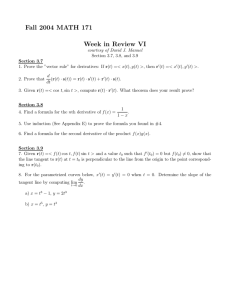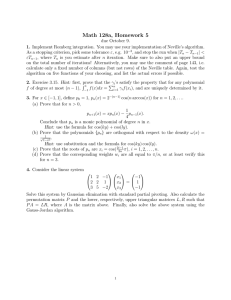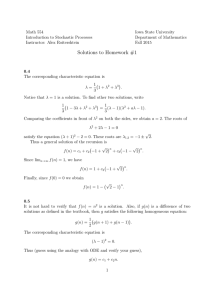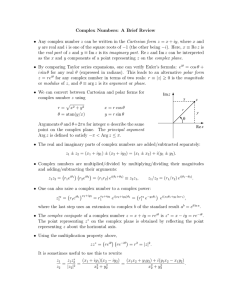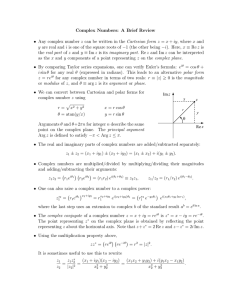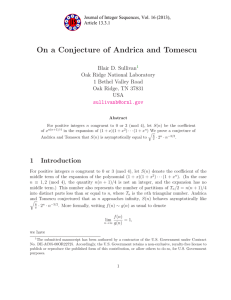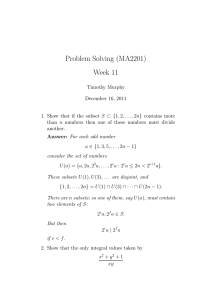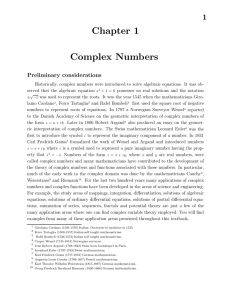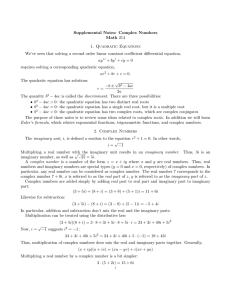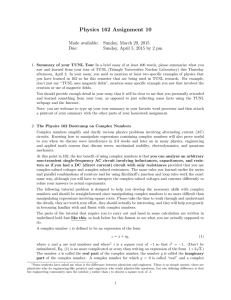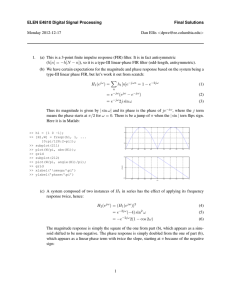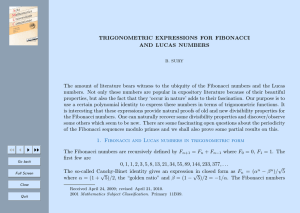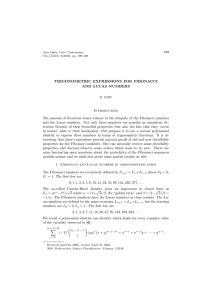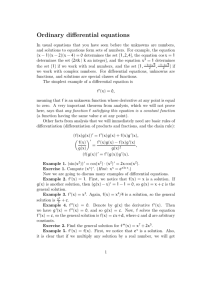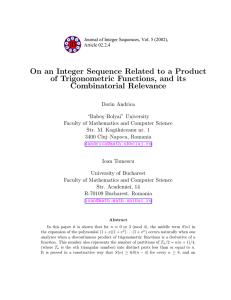Complex numbers.
advertisement
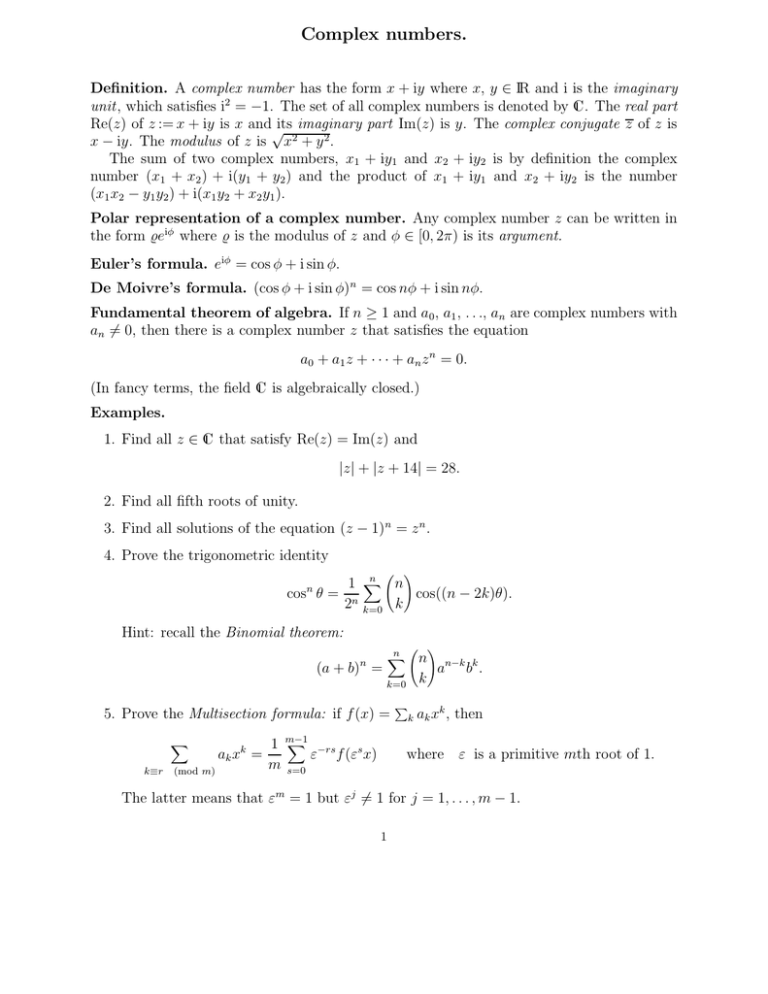
Complex numbers. Definition. A complex number has the form x + iy where x, y ∈ IR and i is the imaginary unit, which satisfies i2 = −1. The set of all complex numbers is denoted by C. The real part Re(z) of z := x + iy is x and√its imaginary part Im(z) is y. The complex conjugate z of z is x − iy. The modulus of z is x2 + y 2 . The sum of two complex numbers, x1 + iy1 and x2 + iy2 is by definition the complex number (x1 + x2 ) + i(y1 + y2 ) and the product of x1 + iy1 and x2 + iy2 is the number (x1 x2 − y1 y2 ) + i(x1 y2 + x2 y1 ). Polar representation of a complex number. Any complex number z can be written in the form %eiφ where % is the modulus of z and φ ∈ [0, 2π) is its argument. Euler’s formula. eiφ = cos φ + i sin φ. De Moivre’s formula. (cos φ + i sin φ)n = cos nφ + i sin nφ. Fundamental theorem of algebra. If n ≥ 1 and a0 , a1 , . . ., an are complex numbers with an 6= 0, then there is a complex number z that satisfies the equation a0 + a1 z + · · · + an z n = 0. (In fancy terms, the field C is algebraically closed.) Examples. 1. Find all z ∈ C that satisfy Re(z) = Im(z) and |z| + |z + 14| = 28. 2. Find all fifth roots of unity. 3. Find all solutions of the equation (z − 1)n = z n . 4. Prove the trigonometric identity n n 1 X cos((n − 2k)θ). cos θ = n 2 k=0 k ! n Hint: recall the Binomial theorem: n (a + b) = n X ! n n−k k a b . k k=0 5. Prove the Multisection formula: if f (x) = k≡r X (mod m) a k xk = X 1 m−1 ε−rs f (εs x) m s=0 P k ak xk , then where ε is a primitive mth root of 1. The latter means that εm = 1 but εj 6= 1 for j = 1, . . . , m − 1. 1 6. Evaluate k≡1 7. Prove that the number X (mod 3) n k ! n X k=0 and k≡2 ! 2n + 1 3k 2 2k + 1 is not divisible by 5 for any integer n ≥ 0. X (mod 3) ! n . k

